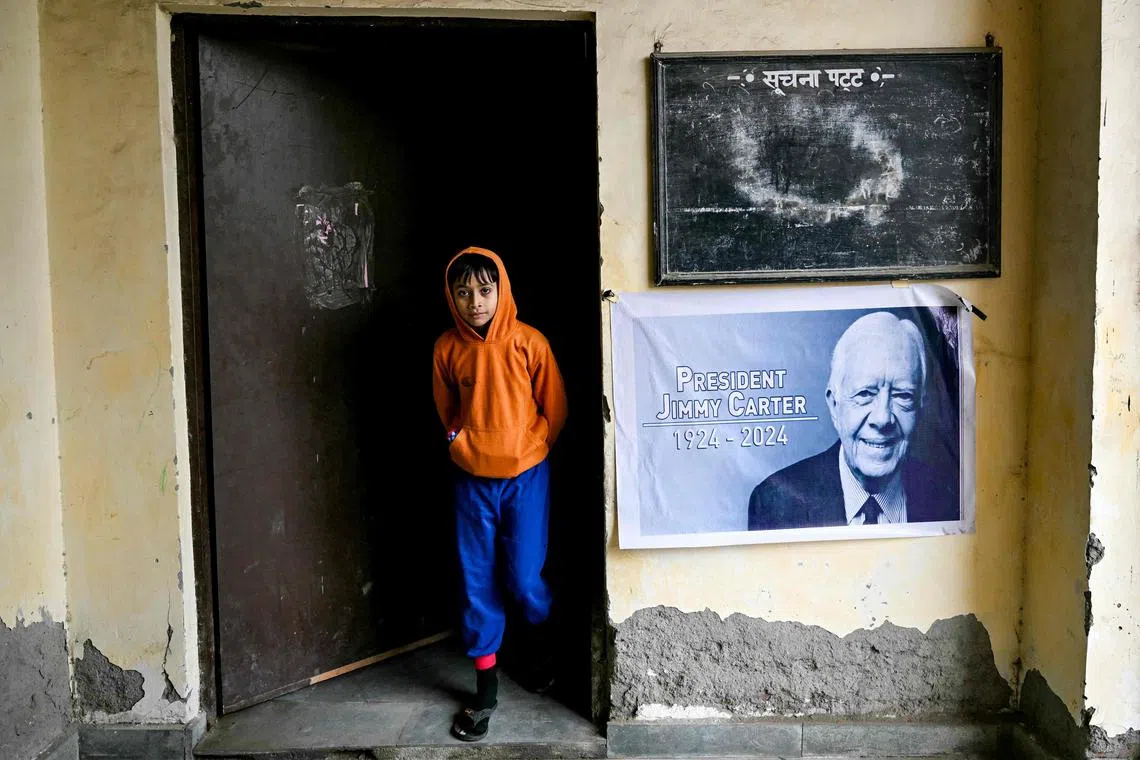Grief and nostalgia in India’s ‘Jimmy Carter village’
Sign up now: Get ST's newsletters delivered to your inbox

Carterpuri, or the “village of Carter”, was abruptly renamed from Daulatpur Nasirabad after an hour-long visit by the Nobel laureate in 1978.
PHOTO: AFP
Follow topic:
NEW DELHI - In a quiet village tucked in the shadow of India’s capital, the late US president Jimmy Carter’s name is etched for posterity.
Carterpuri, or the “village of Carter”, was abruptly renamed from Daulatpur Nasirabad after an hour-long visit by the Nobel laureate in 1978.
The renaming was suggested by India’s then Prime Minister Morarji Desai, who accompanied Mr Carter on the visit to the small hamlet, some 30km from New Delhi.
“When the proposal was mooted, all the village elders immediately said yes,” recalled 71-year-old resident Attar Singh, who vividly remembers the January afternoon from nearly half a century ago.
One of the last surviving members from the generation old enough to remember the occasion, Mr Singh said he was “distressed” by Mr Carter’s death in December 2024,
A picture of the former president was quickly downloaded from the internet, framed, garlanded and placed at a local war memorial, where a group of village elders made offerings of salty porridge and a newly stitched traditional turban.
Mr Singh said the porridge and the turban, along with a condolence message, were then shipped to the US Embassy.
“The entire village grieved because we considered him as one of our own,” said younger resident Rajiv Kumar, who was a toddler when Mr Carter visited.
The body of Mr Carter, who died at the age of 100, is currently lying in state in Washington
‘Such a big man’
Mr Carter’s visit to the village, then home to less than 500 people, was not by chance.
He was driven by a deeply personal mission: His mother Lillian had worked in the village as a Peace Corps volunteer in the late 1960s.
The dilapidated mansion where she stayed during her time there no longer exists. It was torn down around 15 years ago to make way for a concrete two-storey structure with a line of tiny shops on its ground floor.
Little else from that era survives in Carterpuri, which now has a population of roughly 5,000.
The village council office, where Mr Carter and his wife Eleanor Rosalynn Carter were feted while bedecked in traditional headgear, is now a community health centre.
Nonetheless, Mr Carter’s visit remains firmly imprinted in the memory of Carterpuri’s old-timers.
“I was a little boy then but I remember everything,” said 62-year-old Motiram, who goes by one name.
His recollections include Mr Carter smoking tobacco from a hookah and waving at the eager children who looked from the rooftops as he took a tour of the village.
But Mr Motiram’s nostalgia is tinted with disillusionment.
“Despite such a lofty name, our village has seen no progress in all these years,” he said.
“If they named our village after such a big man, there should have been some work done to justify it.” AFP

